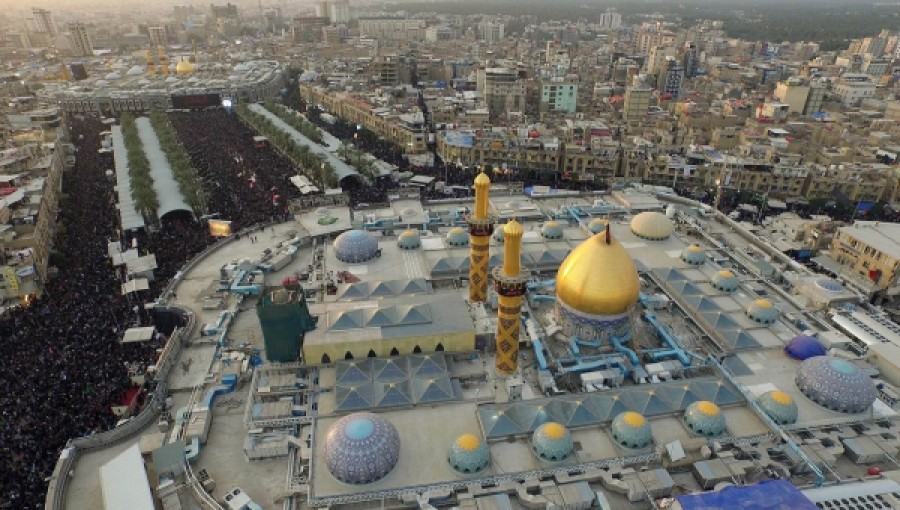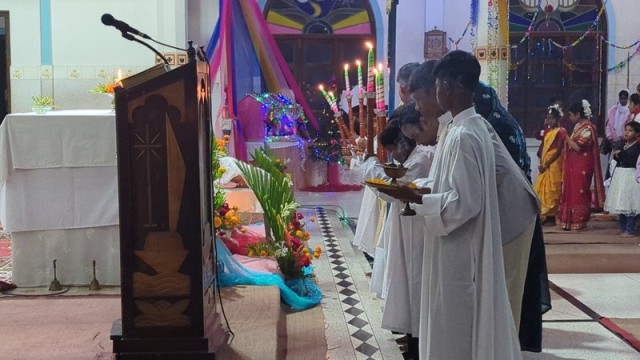Nestled within the heart of the Islamic world, the Imam Husayn Mosque stands as a captivating enigma, drawing scholars and the curious with its aura of mystery and architectural grandeur. While other grand mosques boast well-documented origins, this sanctuary remains cloaked in ambiguity, adding to its allure and intrigue. Through meticulous research and exploration, we embark on a journey to unravel the fragmented evidence surrounding this enigmatic place of worship. The Imam Husayn Mosque serves as a testament to faith, history, and artistic grandeur, yet its true significance within Muslim society eludes easy explanation. As we stand in awe of its architectural splendour and spiritual resonance, let us reflect on the timeless wisdom it imparts—the beauty of diversity, the power of faith, and the enduring legacy of human endeavour.
History and Origins
The enigmatic origins of the Imam Husayn Mosque are shrouded in the mists of time, entwined within the rich tapestry of Islamic history. Whispers of its creation echo through the corridors of legend, suggesting an inception during the illustrious golden age of Islamic civilization. Despite the allure of these tales, the lack of tangible evidence has left historians grappling with the elusive truth behind the mosque's genesis, fueling fervent debate and speculation.

Known more commonly as the Imam Husayn Shrine, the mosque stands as a solemn sentinel in Karbala, Iraq. This revered sanctuary serves as the eternal resting place of Husayn ibn Ali, the esteemed third Imam of Shia Islam and a beloved grandson of the Prophet Muhammad. Its foundations are rooted in the hallowed grounds where Imam Husayn met his martyrdom during the pivotal Battle of Karbala in 680 CE. Today, the shrine beckons pilgrims from far and wide, particularly during the poignant observance of Ashura, as they gather to pay homage to the legacy and sacrifice of Imam Husayn.
Architectural Marvel: The Imam Husayn Mosque
The Imam Husayn Mosque stands as a testament to architectural brilliance, seamlessly blending Abbasid and Islamic styles to create a mesmerizing sanctuary of spiritual significance. At its core are two towering golden domes, rising 27 meters high, symbolizing not just the physical structure but also the spiritual ascent and enduring resilience of the faith it represents. Beneath these domes lies the tomb, encircled by a metal-mesh structure, serving as a focal point for reverence and reflection. Surrounding this central feature are approximately 65 rooms dedicated to study, underscoring the mosque's pivotal role as a hub of Islamic learning and enlightenment.

What truly distinguishes the Imam Husayn Mosque is its architectural grandeur, a harmonious fusion of traditional Islamic motifs and contemporary innovation. Intricate arabesque patterns adorn its walls, while soaring minarets punctuate the skyline, evoking a sense of timeless elegance. Its symmetrical layout and meticulous craftsmanship pay homage to the unparalleled skill of ancient Islamic artisans, creating a space that beckons worshippers to find solace, serenity, and spiritual reflection within its hallowed halls.
Legacy Beyond Architecture: The Imam Husayn Mosque
As the identity of the mosque's original architects remains veiled in mystery, its significance transcends the realm of mere brick and mortar. For centuries, the Imam Husayn Mosque has served as a beacon of unity, compassion, and devotion within the Muslim community. Beyond its physical structure, its hallowed halls have borne witness to moments of profound significance – from joyous celebrations to solemn contemplation. It has been a sanctuary offering solace to the weary and inspiration to the faithful, embodying the timeless values of Islam and fostering a sense of belonging and spiritual fulfilment for all who enter its sacred confines.
Location and Importance
Nestled amidst the bustling streets of a vibrant metropolis, the Imam Husayn Mosque occupies a central role in the fabric of urban life. Its strategic location serves as a beacon of hope and enlightenment, drawing worshippers from far and wide to partake in prayers, lectures, and communal gatherings. Beyond its physical presence, the mosque fosters a sense of belonging and camaraderie, fostering bonds of brotherhood and sisterhood that transcend cultural and ethnic boundaries.
Read: A Testament to Islamic Heritage
Continued Relevance in the Modern Era
In the present day, the mosque remains a cornerstone of community life, providing a space for worship, learning, and contemplation. Its existence serves as a testament to the historical sacrifices made for the preservation of Islam and continues to inspire Muslims worldwide in their pursuit of faith and righteousness.
Read: A Testament to Cultural Harmony and Architectural Brilliance
Unraveling the Enigma: A Call for Exploration
The enigmatic aura surrounding the Imam Husayn Mosque beckons us to embark on a journey of discovery. While historical records may yet reveal hidden truths, local folklore and untapped sources of information could hold the key to unraveling its mysteries. By conducting further research, including architectural analysis and exploration of regional traditions, we may uncover the secrets of the Imam Husayn Mosque and shed light on its significance within the broader context of Islamic architecture and heritage.

The "Imam Husayn Mosque" is more than just a mosque; it is a chapter of history, a masterpiece of architecture, and a living symbol of devotion. Its story encourages us to reflect on the values of courage, sacrifice, and the enduring power of faith that transcends time and geography.
This exploration into the "Imam Husayn Mosque" reveals the layers of meaning it holds within the Muslim society and Islam at large. It stands as a reminder of our shared human heritage and the timeless lessons we can draw from history.































Comment: